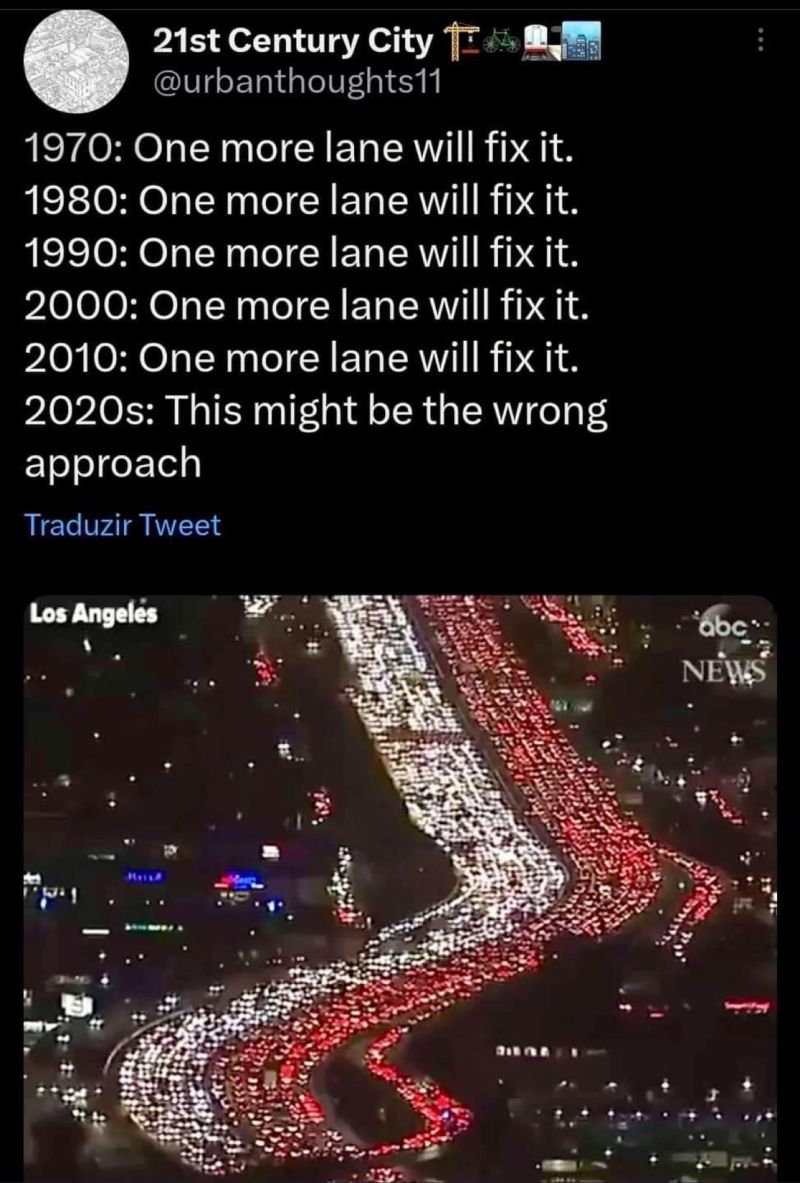this post was submitted on 09 May 2024
1212 points (97.4% liked)
Memes
45734 readers
393 users here now
Rules:
- Be civil and nice.
- Try not to excessively repost, as a rule of thumb, wait at least 2 months to do it if you have to.
founded 5 years ago
MODERATORS
you are viewing a single comment's thread
view the rest of the comments
view the rest of the comments

There will always be traffic, but public transportation allows for a higher throughput for the same speed and total surface area of the roads.
Let's be generous and assume that every car has 2 people in it (the truth is that the vast majority of cars, especially in the US, only have 1 person in them). Now imagine 15 cars vs. 30 bicycles. If we figure that you can comfortably fit 3 bikes in the same space as 1 car, you're looking at 150% throughput for the bikes compared to the cars at the same speed. Give them their own dedicated, separate infrastructure, and they can probably go faster than traffic while also removing the danger of bikes and cars sharing the road. If you figure buses can fit 20 people in the space of 2 car lengths, you're looking at 10x the throughput.
And that's not even getting into transportation that doesn't use the roads. The Boston T is a perfect example of this. Despite its notoriety for constant failures due to poor maintenance, and only being half the size it was 100 years ago, the T is considered to be the 3rd best public transportation network in the US. Why? Because the average commute time is about half the national average at roughly half an hour, and a full 50% of Boston's commuters use the T every day. That's half as many cars in traffic every day than if the T didn't exist. Could you imagine if Boston, notorious for its bad roads and heavy traffic, suddenly had twice as many cars driving on its streets?